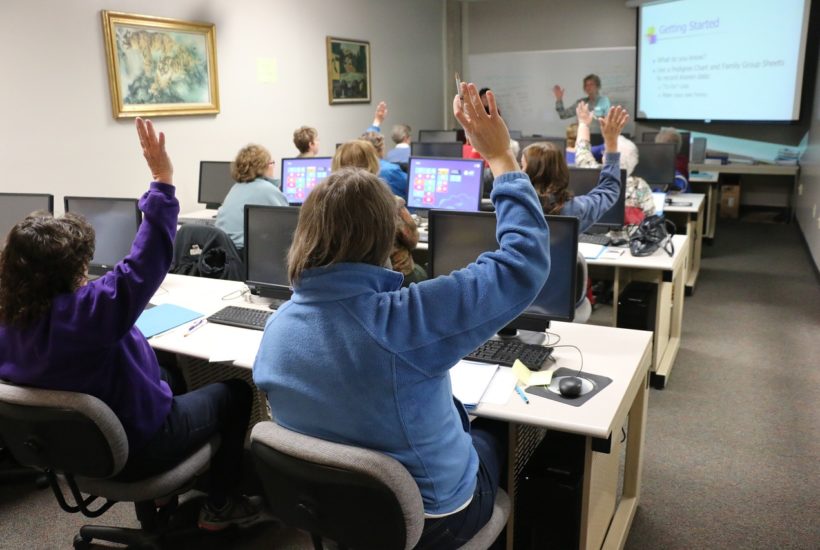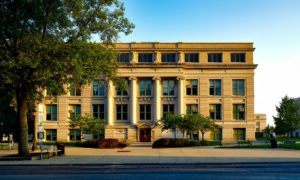Business
Federal Relief Funds Continue to Flow to School Districts
Hundreds of school officials are making budget decisions for 2022 and discussing potential uses of ESSER grants. Many school districts will use the funding to launch large construction projects, and some school officials say they will use the funding for technology services. More than $4.5 million in ESSER funding allocated to the Garaway Local School District may be used to make HVAC improvements.

Public schools have been granted approximately $190.5 billion in new funding from the federal government. In 2020 and 2021, Congress passed three stimulus bills that provided funding to the Elementary and Secondary School Emergency Relief (ESSER) Fund. It came in three tranches:
- ESSER I: The Coronavirus Aid, Relief, and Economic Security (CARES) Act, passed in 2020, provided $13.5 billion to the ESSER Fund.
- ESSER II: The Coronavirus Response and Relief Supplemental Appropriations Act, 2021 (CRRSAA) provided $54.3 billion more in supplemental ESSER funding.
- ESSER III: The American Rescue Plan Act, passed in 2021, provided the final tranche of funding – another $122.7 billion in supplemental ESSER funding.
Few restrictions apply as to how the funding may be used. The guidance is that ESSER funding indicates it should be used for initiatives linked to helping students, educators, staff, and families emerge from the impacts of COVID-19. That leaves school officials with quite a bit of latitude. For example, the funding may be used for:
- Purchase of educational technology (hardware, software, connectivity, and other devices.
- School facility repairs and improvements.
- Inspections, testing, maintenance, replacements, and projects to improve indoor air quality.
- Mental health services and support.
- Acquisition of cleaning and sanitizing facilities.
Hundreds of school officials are making budget decisions for 2022 and discussing potential uses of ESSER grants. Many school districts will use the funding to launch large construction projects, and some school officials say they will use the funding for technology services.
Minnesota
School officials in the Brandon-Evansville School District have discussed construction projects that include expansion of learning spaces at two schools. At the B-E Elementary Evansville Campus 2-5, the conceptual plan includes adding new classrooms, a commons area, a multi-purpose gymnasium, and a new parking area. A fitness room will be a part of the new gym, and a new storage shed facility for district vehicles will be built. Additional revenue sources will leverage the school’s anticipated ESSER funding.
Ohio
More than $4.5 million in ESSER funding allocated to the Garaway Local School District may be used to make HVAC improvements in every building and to purchase larger buses. In addition, the school district has proposed using the funding for a weight room expansion, all-weather track replacement, and construction of a multi-purpose field house. Most school officials will leverage the ESSER funding with other sources of revenue.
Wisconsin
Milwaukee Public Schools administrators have proposed spending $225 million in federal stimulus funds to improve air quality, provide tutoring and mental health services, and launch other infrastructure initiatives. Some of the needs include:
- Improvement of ventilation systems and air quality.
- Outdoor classroom structures.
- Replacement of drinking fountains with bottle filling stations.
- New lockers for students.
- Exercise stations at 100 schools.
- “Traffic gardens” at 100 schools.
- Renovation projects.
- SMART Boards, Chromebooks, and other technology.
Kentucky
The Wayne County Schools Board of Education voted on May 20 to utilize $6 million of ESSER funding to replace the 65-year-old Walker Early Learning Center with a new building that features larger, more modern classroom space, more efficient electrical and lighting systems, and a new HVAC system. The new, 45,000-square-foot building has a cost estimate of $12 million, with 50 percent of the cost being covered by ESSER funds.
Another top priority involves mechanical and electrical upgrades at Bell Elementary for an estimated at $2.5 million with all the funding coming from ESSER.
A third priority involves spending $6 million to renovate the high school gymnasium. ESSER funds will contribute to 42 percent of the cost.
North Carolina
School officials may use ESSER funds to renovate air-conditioners at six elementary school gymnasiums and replace multiple roofs at a cost of $12.7 million. An additional $1.3 million that the district had saved to update Chromebooks for middle and high school students will remain available as well. School officials also are spending approximately $268,000 each year to service 1,100 internet hotspots for students without reliable access at home. Other construction projects under consideration include building a new school and renovating or replacing Carthage Elementary.
Texas
The Cameron ISD will receive approximately $5.2 million from the American Rescue Plan. The district plans to use the funds to address student learning loss as well as replacing some HVAC systems.
Mississippi
The Neshoba Central School District will receive $6.8 million in ESSER funds and plans to spend $5.8 million on facility renovations. This first phase of construction addressed modernizing restrooms with touchless appliances in three buildings at the elementary school. The first heating ventilation and air conditioning system, new exterior doors and windows are for the second phase of construction projects scheduled for the fall. The third phase will include more replacement projects.
Tennessee
The Jackson-Madison County School System has been allocated $16.7 million in ESSER II funding, and officials announced another ESSER III grant of $37 million.
District officials are considering using:
- $100,000 for a learning management system to house the school system’s curriculum for online learning.
- $6.3 million for student laptops.
- $813,000 for teacher laptops.
- $350,000 for a mobile classroom to be taken into communities where students have limited access to after-school programs.
- $556,000 for laptop equipment and devices to ensure the equipment is protected from damage.
- $2.3 million plan for locker and multipurpose rooms at two middle schools.
- $680,000 for new HVAC systems at two schools.
School districts have already received quite a bit of funding, but the ESSER grant program is designed to provide even more. This forthcoming federal aid promises thousands of new contracting opportunities.
__
(Featured image by dschap via Pixabay)
DISCLAIMER: This article was written by a third party contributor and does not reflect the opinion of Born2Invest, its management, staff or its associates. Please review our disclaimer for more information.
This article may include forward-looking statements. These forward-looking statements generally are identified by the words “believe,” “project,” “estimate,” “become,” “plan,” “will,” and similar expressions. These forward-looking statements involve known and unknown risks as well as uncertainties, including those discussed in the following cautionary statements and elsewhere in this article and on this site. Although the Company may believe that its expectations are based on reasonable assumptions, the actual results that the Company may achieve may differ materially from any forward-looking statements, which reflect the opinions of the management of the Company only as of the date hereof. Additionally, please make sure to read these important disclosures.

-

 Business1 week ago
Business1 week agoThe TopRanked.io Weekly Digest: What’s Hot in Affiliate Marketing [uMobix Affiliate Program Review]
-

 Business2 weeks ago
Business2 weeks agoThe TopRanked.io Weekly Digest: What’s Hot in Affiliate Marketing [PureVPN Affiliates Review]
-

 Crypto2 days ago
Crypto2 days agoBitcoin Stabilizes Above $120K: Consolidation Signals Before Next Breakout
-

 Crowdfunding1 week ago
Crowdfunding1 week agoPMG Empowers Italian SMEs with Performance Marketing and Investor-Friendly Crowdfunding
















